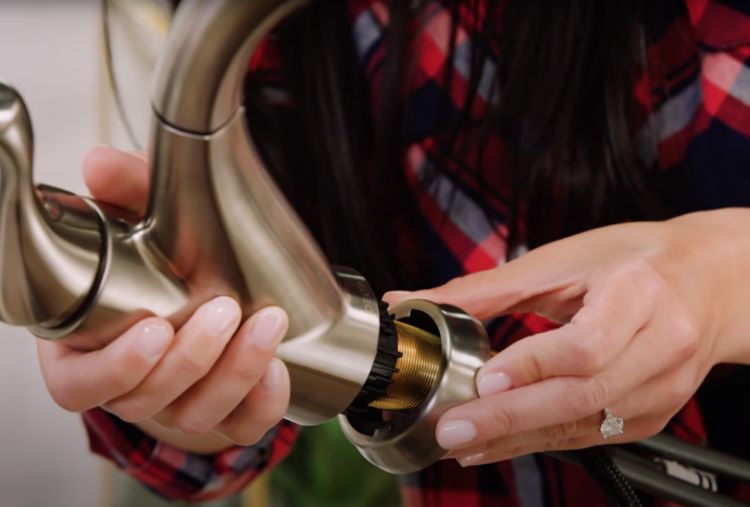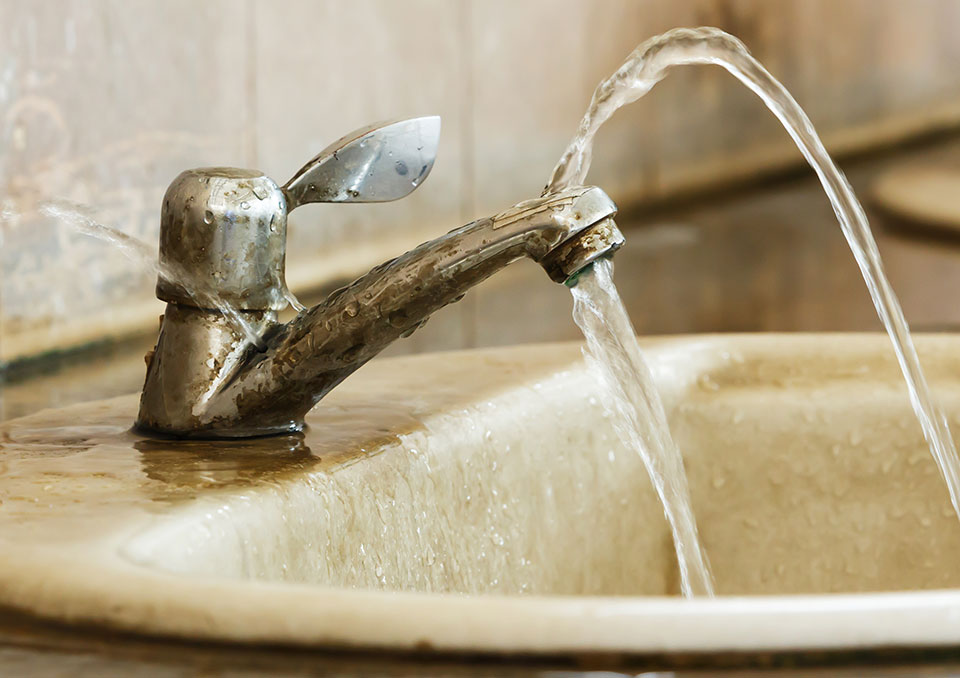We have found this post relating to 4 Common Reasons for a Leaky Faucet below on the net and decided it made good sense to discuss it with you over here.

Trickling taps could appear like a small trouble, yet their effect exceeds simply the aggravation of the audio. From wasting water to sustaining unnecessary monetary costs and health dangers, neglecting a leaking faucet can result in different repercussions. In this short article, we'll look into why it's vital to address this common home concern promptly and successfully.
Wastage of Water
Environmental Influence
Dripping faucets add significantly to water wastefulness. According to the Environmental Protection Agency (EPA), a single tap dripping at one drip per secondly can waste more than 3,000 gallons of water per year. This not just pressures water resources however additionally affects communities and wild animals based on them.
Financial Expenses
Raised Water Bills
Beyond the ecological influence, leaking taps can blow up water bills substantially. The collected wastefulness gradually translates into greater energy expenditures, which might have been prevented with timely fixings.
Potential Property Damage
Additionally, extended dripping can lead to harm to fixtures and surface areas surrounding the faucet. Water accumulation can create staining, deterioration, and even structural concerns if left ignored, resulting in added fixing prices.
Health and wellness Worries
Mold and Mildew Development
The continuous existence of dampness from a leaking faucet develops a suitable setting for mold and mildew development. These fungis not just endanger interior air quality however additionally present health dangers, particularly for people with breathing conditions or allergic reactions.
Waterborne Conditions
Stationary water in dripping taps can come to be a breeding ground for microorganisms and other pathogens, increasing the risk of waterborne conditions. Impurities such as Legionella germs flourish in stationary water, potentially bring about serious diseases when ingested or inhaled.
DIY vs. Professional Repair
Benefits and drawbacks of Do It Yourself Fixing
While some may try to deal with a leaking tap themselves, DIY repairs feature their own collection of difficulties. Without proper understanding and devices, do it yourself efforts can intensify the concern or result in incomplete repair services, prolonging the issue.
Benefits of Hiring an Expert Plumber
Working with a specialist plumber guarantees that the underlying root cause of the leaking faucet is addressed effectively. Plumbing professionals possess the competence and equipment to detect and repair faucet problems efficiently, saving time and lessening the danger of more damages.
Step-by-Step Guide to Taking Care Of a Dripping Tap
Devices Required
Before attempting to fix a dripping tap, collect the essential devices, including an adjustable wrench, screwdrivers, replacement components (such as washing machines or cartridges), and plumber's tape.
Common Faucet Issues and Their Solutions
Recognize the kind of faucet and the particular concern causing the drip. Common problems consist of damaged washers, rusty shutoff seats, or faulty O-rings. Refer to producer guidelines or on the internet tutorials for detailed assistance on repairs.
Preventive Measures
Normal Maintenance Tips
To stop trickling faucets, perform regular upkeep such as cleaning aerators, checking for leakages, and changing damaged parts quickly. Additionally, take into consideration installing water-saving tools or upgrading to extra effective components.
Importance of Prompt Repairs
Dealing with dripping faucets as soon as they're noticed prevents additional water wastage and prospective damage, inevitably saving both water and money in the future.
Effect On Residential Property Worth
Understanding of Well-Maintained Home
Maintaining a residential property in good condition, including resolving maintenance issues like leaking taps, enhances its perceived value and desirability amongst possible customers or tenants.
Impact on Resale Worth
Properties with well-maintained plumbing components, including taps, command higher resale values in the real estate market. Attending to leaking taps can add to a positive impact throughout home assessments and arrangements.
Environmental Responsibility
Individual Contribution to Preservation
Taking responsibility for taking care of trickling taps lines up with more comprehensive efforts toward water preservation and ecological sustainability. Every individual's actions collectively make a significant impact on protecting valuable sources.
Sustainable Living Practices
By focusing on punctual repair services and embracing water-saving routines, individuals contribute to sustainable living techniques that benefit both present and future generations.
Final thought
Attending to a dripping faucet exceeds simple ease; it's a crucial action toward saving water, decreasing financial costs, and safeguarding health and wellness and residential property. Whether via DIY repair services or professional assistance, doing something about it to fix leaking taps is a tiny yet impactful way to advertise responsible stewardship of sources and contribute to a much healthier, a lot more lasting future.
How to Fix a Leaky Faucet: Step-by-Step Repair Guide
A leaky faucet may seem like a simple annoyance, but if it's not fixed promptly, that leak could cost hundreds to potentially thousands. From water damage to mold, mildew, and high water bills, even a tiny leak can be catastrophic if left unattended. Damage like this can even affect the overall value of your home, so it's important to take the right approach for leaky faucet repair. You may need the help of a plumber in some cases, but we've got a few tips you can try on how to fix a leaky faucet before calling the pros.
Four Faucet Types
When you're learning how to fix a leaky faucet, the first step is knowing what kind of faucet you're working with! There are four common types.
Cartridge Faucets
Cartridge faucets come in one- or two-handled varieties. In one-handled cartridge faucets, hot and cold water combines in a single cartridge. In the two-handled versions, hot and cold water are controlled separately and mixed in the faucet.
Ball Faucets
Ball faucets have a single lever you push up and down to adjust the pressure and rotate to change the temperature. A slotted metal ball controls the amount of water allowed into the spout.
Compression Washer Faucets
They're the oldest type of faucet, but they're still used in many homes — especially older ones. Compression faucets have two separate handles that, when turned, raise or lower the washer that seals a water valve. This valve stops water from flowing through the faucet when it is turned off.
Disc Faucets
Disc faucets rarely need to be repaired due to their maintenance-free design. The water flow is controlled by two discs — the upper one raises and lowers against a fixed lower disc, creating a watertight seal. If your disc faucet starts leaking, you may need to replace the seals or clean residue buildup from the inlets.
Fixing a Leaky Faucet
Step 1: Turn Off the Water
Whether you're learning how to fix a leaky bathtub faucet or how to fix a leaky kitchen faucet, always turn off the water supply to your working area when you're fixing a leak. The last thing you want is a flood added to your list of things to fix.
Look for the shutoff valves below your sink or around the tub and turn them clockwise to stop the water flow. If your faucet doesn't have shutoff valves, you may need to turn off the water for the whole house. Check to make sure it's off by turning the faucet on. If nothing comes out, you're ready to start the repair.
Step 2: Take Apart the Faucet
How you disassemble your faucet depends on the type of fixture you have. You can use a flathead screwdriver to remove the caps on top of the handle or handles for cartridge and compression faucets. Inside, you should see handle screws. Unscrew these with a screwdriver to remove the handle.
Disc- and ball-style faucets will typically have an inlet screw near the handle, and removing that will reveal the interior of the faucet.
Detach the Valve Stem
For cartridge- and compression-style faucets, you'll see the inner valve stem or cartridge once you remove the faucet handles. If you have a compression faucet, unscrew the brass valve stem. If you have a cartridge faucet, pull out the cartridge. If your cartridge has been in place for a while, it may require some tools or extra force to remove it due to mineral deposits.
Examine and Replace Parts
Once you've removed the parts, check them out to confirm what needs to be replaced. You may see corroded rubber washers, O-rings, stems, or cartridges. On a ball-style faucet, check the seats and springs for damage.
If you need to repair a leaky disc faucet, check the inlet and seals on the lower disc.
Once you determine what parts must be replaced, visit your local hardware store. Bring the damaged parts with you to ensure you can purchase the correct components to replace them.
Clean Valves and Faucet Cavity
If you've removed a stem or cartridge, you may notice mineral buildup in the faucet's threads. Use white vinegar to clean the valve seat by soaking it for a few minutes, then scrub it away with a soft toothbrush and rinse with warm water. You can also clean the interior of the faucet in the same way.
Reassemble the Faucet
Once your faucet is cleaned and the required parts have been replaced, it's time to reassemble it. Put the pieces back together and slowly turn the water supply back on. Doing this slowly is crucial because too much initial water pressure can damage the new hardware you've just installed.
https://homewarranty.firstam.com/blog/how-to-fix-leaky-faucet

We hope you enjoyed reading our topic on Leaky Faucets: Why They Happen & What to Do About Them. Thanks for taking time to read through our blog post. You should pause to promote this page if you enjoyed reading it. Thank you so much for your time invested reading it.